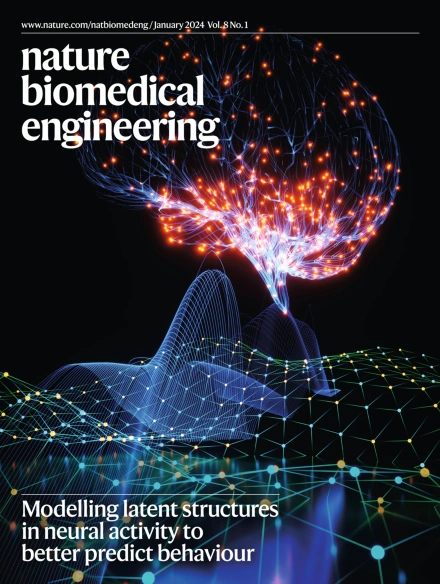Nanobody-based combination vaccine using licensed protein nanoparticles protects animals against respiratory and viral infections.
IF 26.8
1区 医学
Q1 ENGINEERING, BIOMEDICAL
引用次数: 0
Abstract
Combination vaccines promise to simplify immunization schedules and improve coverage, but remain technically challenging owing to antigen compatibility, immunogenic balance and formulation complexity. Here we report a modular strategy that uses a single-component nanobody binder to noncovalently attach diverse antigens to intact particles from the licensed hepatitis E vaccine. To identify a suitable binder, an alpaca was immunized with the vaccine, and nanobodies were screened via phage display. One nanobody, P1-5B, selectively bound recessed, non-immunodominant sites on the particle surface and enabled stable antigen display without disrupting native immunogenicity. Using this binder, we generated three vaccine formulations displaying five to eleven antigens, including variants from SARS-2 coronavirus, influenza virus and respiratory syncytial virus. These multivalent particles exhibited high-affinity assembly, preserved solubility and induced neutralizing titres up to three log units higher than soluble antigens. In mice, hamsters and non-human primates, the candidate vaccines conferred robust protection and showed a favourable safety profile. This approach introduces a scalable, plug-and-display system for rapid development of customizable combination vaccines.基于纳米体的联合疫苗使用许可的蛋白质纳米颗粒保护动物免受呼吸道和病毒感染。
联合疫苗有望简化免疫计划并提高覆盖率,但由于抗原兼容性、免疫原性平衡和配方复杂性,在技术上仍然具有挑战性。在这里,我们报告了一种模块化策略,该策略使用单组分纳米体粘合剂将多种抗原非共价地附着在已获得许可的戊型肝炎疫苗的完整颗粒上。为了确定合适的结合剂,用疫苗免疫羊驼,并通过噬菌体展示筛选纳米体。一个纳米体P1-5B选择性地结合颗粒表面上的非免疫优势位点,并在不破坏天然免疫原性的情况下实现稳定的抗原展示。使用这种粘合剂,我们生成了三种疫苗配方,显示5到11种抗原,包括SARS-2冠状病毒、流感病毒和呼吸道合胞病毒的变体。这些多价颗粒表现出高亲和力组装,保持溶解度和诱导中和滴度高达3 log单位高于可溶性抗原。在小鼠、仓鼠和非人类灵长类动物中,候选疫苗具有强大的保护作用,并显示出良好的安全性。这种方法引入了一种可扩展的即插即用系统,用于快速开发可定制的联合疫苗。
本文章由计算机程序翻译,如有差异,请以英文原文为准。
求助全文
约1分钟内获得全文
求助全文
来源期刊

Nature Biomedical Engineering
Medicine-Medicine (miscellaneous)
CiteScore
45.30
自引率
1.10%
发文量
138
期刊介绍:
Nature Biomedical Engineering is an online-only monthly journal that was launched in January 2017. It aims to publish original research, reviews, and commentary focusing on applied biomedicine and health technology. The journal targets a diverse audience, including life scientists who are involved in developing experimental or computational systems and methods to enhance our understanding of human physiology. It also covers biomedical researchers and engineers who are engaged in designing or optimizing therapies, assays, devices, or procedures for diagnosing or treating diseases. Additionally, clinicians, who make use of research outputs to evaluate patient health or administer therapy in various clinical settings and healthcare contexts, are also part of the target audience.
 求助内容:
求助内容: 应助结果提醒方式:
应助结果提醒方式:


